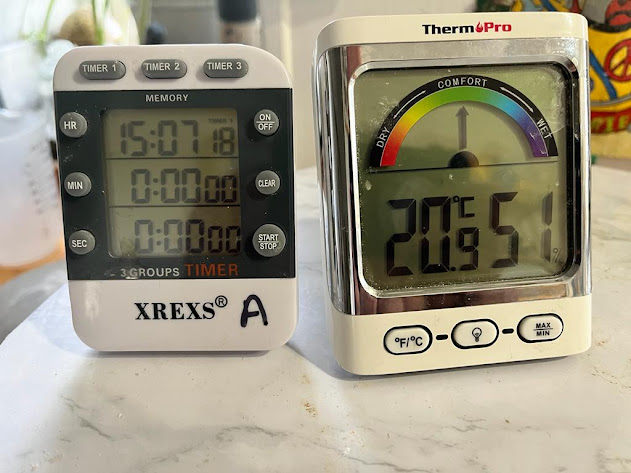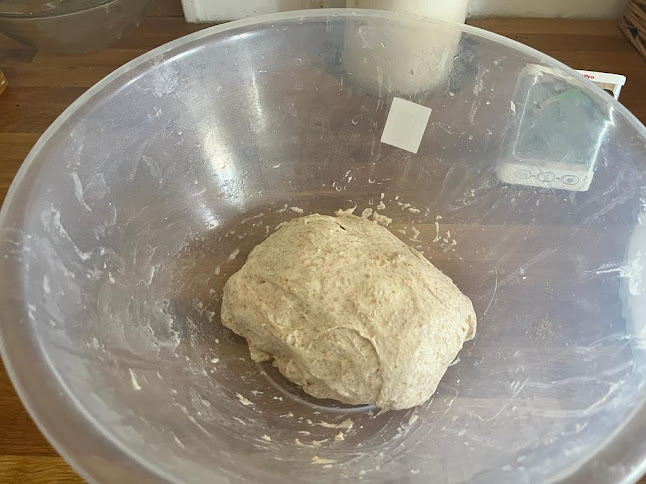Respectus Panis
Welcome to another step-by-step recipe from BreadClub20. Why not drop by our main Facebook page by clicking here.... If you like what you see and enjoy the recipe, we hope you go on to join us by 'Liking' and 'Subscribing'.
One of our bakers here at BreadClub20 introduced me to the technique of Respectus Panis. Yes, it's a technique rather than a bake, but it can be applied to croissants, baguettes and brioche as easily as it can be applied to sourdough and other breads.
To understand the concept of Respectus Panis, we need to look at the work of the French baking group, les Ambassadeurs du Pain, formed in 2005, and currently led by Dominic Planchot, owner of Maison Planchot, in Les Herbiers, in the Pays de Loire, France.
1. Adding very little levain (starter) - usually between 0.5% to 5% maximum
2. Adding less salt than is usual in some artisan breads (2% maximum)
3. Using the best quality flour you can buy
4. Very slow kneading by hand
5. A very long fermentation of 15 - 20 hours at room temperature (15 hours at 24 / 25⁰C & 20 hours at 18 - 20⁰C) and no cold proofing.
What do we expect the benefits to be?
- a more healthier bread, one that has retained its nutrients
- a bread with a lower salt level than usual
- a bread that has consumed less energy by not requiring an extended cold proof
- a cheaper, healthier bread, free from additives and preservatives.
The key is to take on board the principles and then adapt these to your own formula.
Those of you who use my step-by-step guides to bread making will know that I'm a firm believer that once you understand formula and process then you have no need for recipes.
Understand how a bread is constructed and learn the techniques to achieve what you desire and then rest is down to the ingredients. It's as simple as that.
There are also some variables that can never be allowed for in the commercial kitchen of the recipe book writer. Those variables mainly affect time: humidity, altitude, geography and the quality of your ingredients.
In all things - watch the dough not the clock!
Today, we're going to use this technique to bake a sourdough loaf.
 |
| Can you spot what's missing? Don't forget the salt! |
INGREDIENTS
3 gms active starter (made with 1:1: good flour / filtered water / starter)
350 gms good quality strong white bread flour
150 gms good quality wholemeal flour
350 gms filtered tepid water
8 gms crushed sea salt
N.B. These ingredients produce a bread with the following profile: 0.6% starter / 70% hydration / 1.6% salt
METHOD
1. Mix everything together - I prefer a spurtle but a spatula or a hand mixes equally well.
2. Cover and leave to rest at room temperature for 30 minutes
3. Stretch and fold the dough, re-cover and leave for two hours.
4. Repeat stage 3.
5. Cover and leave it at room temperature for 16 - 20 hours. By then, it will have risen and be showing all the signs of a good strong dough.
If your room is 18⁰C - 20⁰C, then 20 hours will be about right
If your room is 24⁰C - 26⁰C then 15 hours will be about right.
However, remember the golden rules -
watch the dough, not the clock, and
use a thermometer to test the temperature of the dough as well as the room.
 |
| 15 hours at 21⁰C proved enough. |
6. Gently pre-shape on a floured board and let it rest for 30 minutes.
7. Gently re-shape and place in a well-prepared banneton.
8. Leave it covered to prove at room temperature for a further 45 mins (warmer room) to an hour (cooler room).
The dough will rise a little but there will still be 'life' in it - enough to help it through the oven spring. Unlike conventional long cold proofing, this dough has developed 'taste and tang' through the process of long and slow fermentation.
9. Preheat the oven to 240⁰C.
Putting the banneton in the freezer for 15 minutes might well help if you intend to score the bread artistically or use a stencil.
Before transferring it to the Dutch Oven, remember to score the bread to allow for expansion.
10. Transfer to a hot Dutch Oven and bake for 30 minutes with the lid on.
11. Lower the temperature to 230⁰C, remove the lid and continue to bake for 15 / 20 minutes until golden and hollow when tapped on the underneath. Watch the bread - not the clock!
12. Cool on a rack for at least two hours.
Happy baking.
N.B.
This is a technique not a formula. The formula is yours... the conditions are easy - use the very best ingredients you can find and keep the quantity of the levain to an absolute minimum.
Your friend is Time....your enemies are preservatives and additives.
Beatus Panis - Respect the bread
Repectus Panis - Lovely bread
POSTSCRIPT
This is a lengthy YouTube piece that will be of interest to those investigating Respectus Panis
https://www.youtube.com/watch?v=9cz3_3jSCnU







.jpeg)

.jpeg)
.jpeg)



Comments
Post a Comment